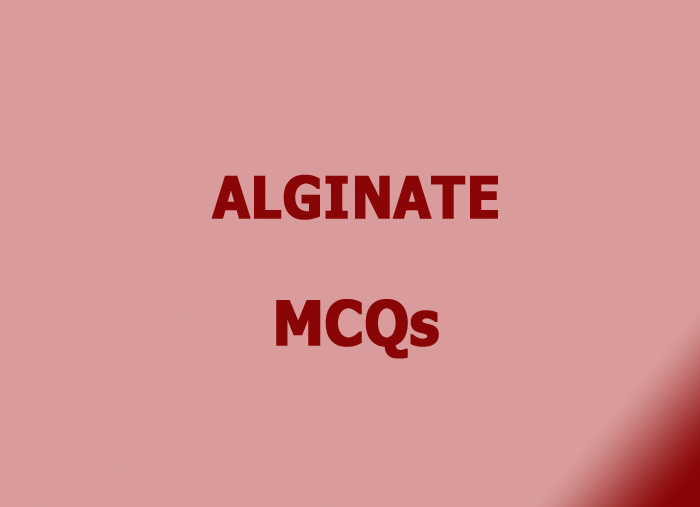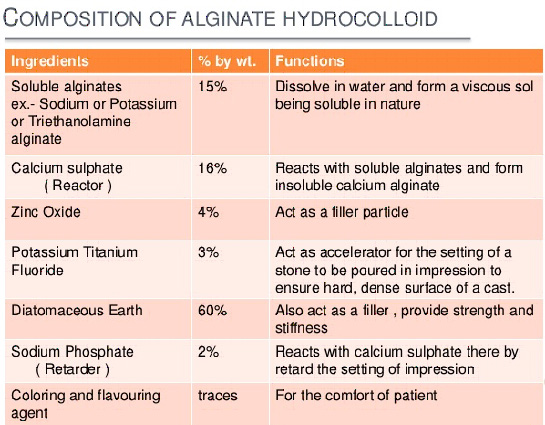- NEED HELP? CALL US NOW
- +919995411505
- [email protected]

A. Reducing the diatamaceous earth
B. Adding heavy metal salts
C. Coating with dihydric alcohol
D. Altering the matrix
Ans. C
These are newer alginates containing glycol, which acts by coating the silica powder particles, preventing the formation of dust while fluffing the powder.
2. Of all the impression materials, the most commonly used is
A. Alginates
B. Agar-agar
C. Impression plaster
D. Impression compound
Ans. A
(Which is the best material for RPD impression- irreversible hydrocolloid ie, Alginate)
3. Which of the following is present in maximum concentration by weight in alginate
A. Calcium sulfate
B. Zinc oxide
C. Diatomaceous earth
D. Trisodium phosphate
Ans. C
4. The term given to the phenomenon of moisture absorption by an alginate impression is
A. Imbibition
B. Synergisis
C. Hysteresis

D. Gelation
Ans. A
5. Which is not seen in hydrocolloid impression material
A. Imbibition

B. Syneresis
C. Recrystallisation
D. Hysteresis
Ans. C
6. Perforated impression trays are used for
A. Alginate
B. Zinc oxide eugenol
C. Agar agar
D. Impression compound
Ans. A
7. Normal temperature of mixing water of alginate is
A. 18-24°C
B. 24-28°C
C. 28-32°C
D. 32-36°C
Ans. A
8. Reactor used in alginate hydrocolloid is
A. Trisodium phosphate
B. Calcium sulphaye dihydrate
C. Zinc oxide
D. Potassium titanium fluoride
Ans. B
9. Which of the following acts as a retarder of alginate
A. Borax
B. Trisodium phosphate
C. Calcium sulfate dihydrate
D. Alginic acid
Ans. B
10. Which of the following is present in dust free alginate
A. Sodium sulphate
B. Glycol
C. Citrate
D. Potassium sulphate
Ans. B




